Orchids Types and Tips for Care
Today I am sharing common types and tips for caring for orchids.
For me orchids are the answer to the call for fresh flowers in late summer.
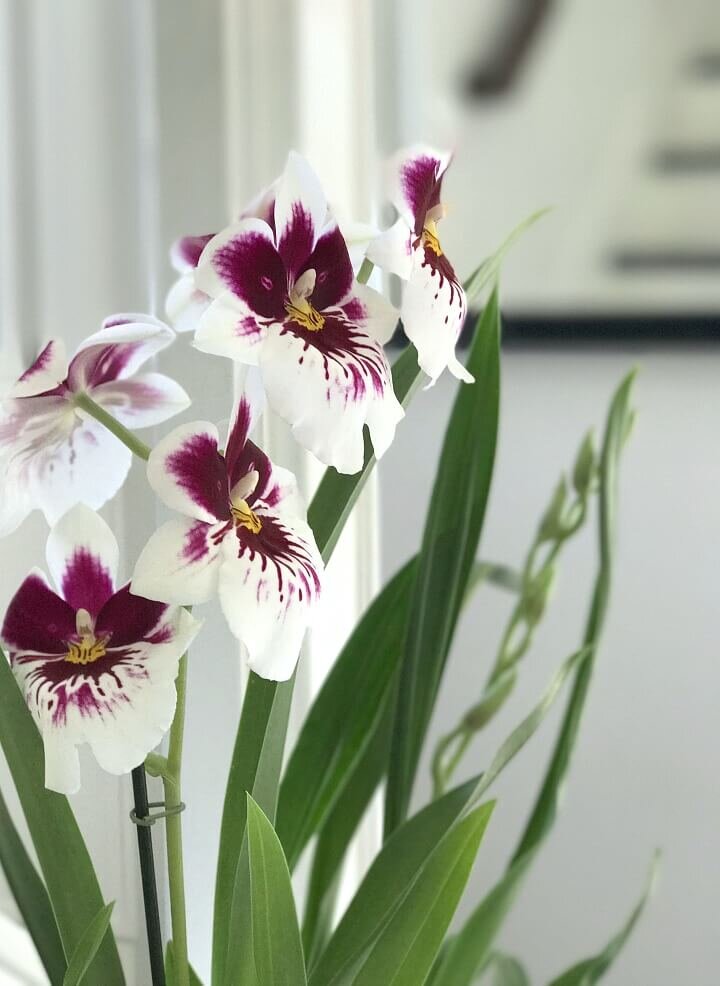
By the end of August the garden is a bit worn out.
Too hot to plant anything new until cooler autumn temperatures come to town.
Fewer garden flowers mean fewer bouquets. This is when the Trader Joe's or LA Flower Mart orchids fill the spots in my house usually occupied by garden blooms.
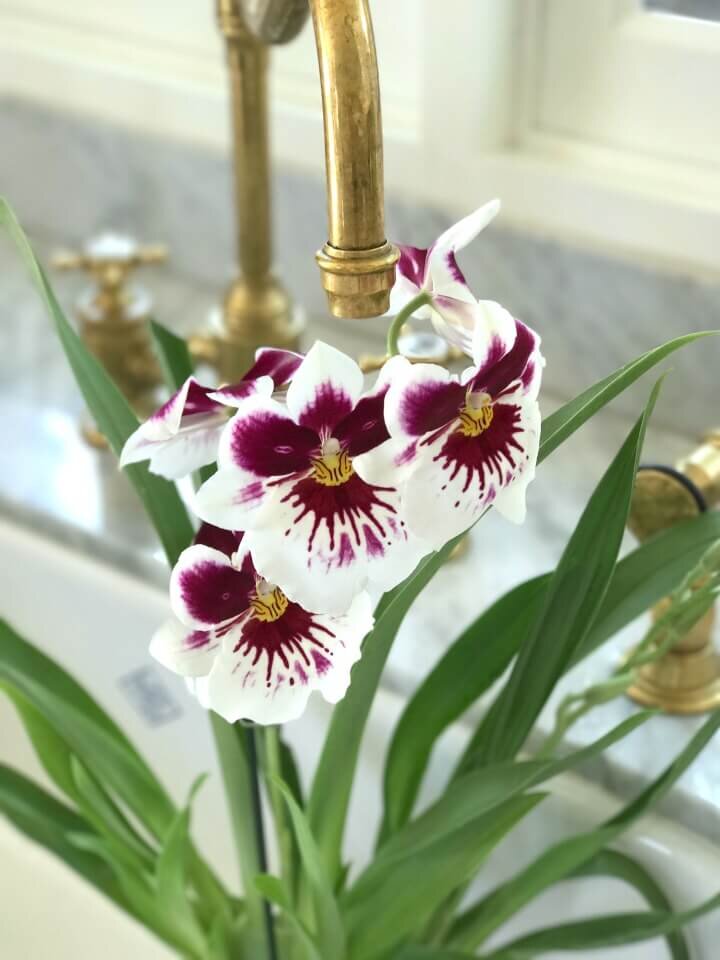
I just bought 3 beauties at TJ's the other day. At $7.99, $12.99 and $14.99 for a triple the price is right.
Great price, easy care & so lovely.
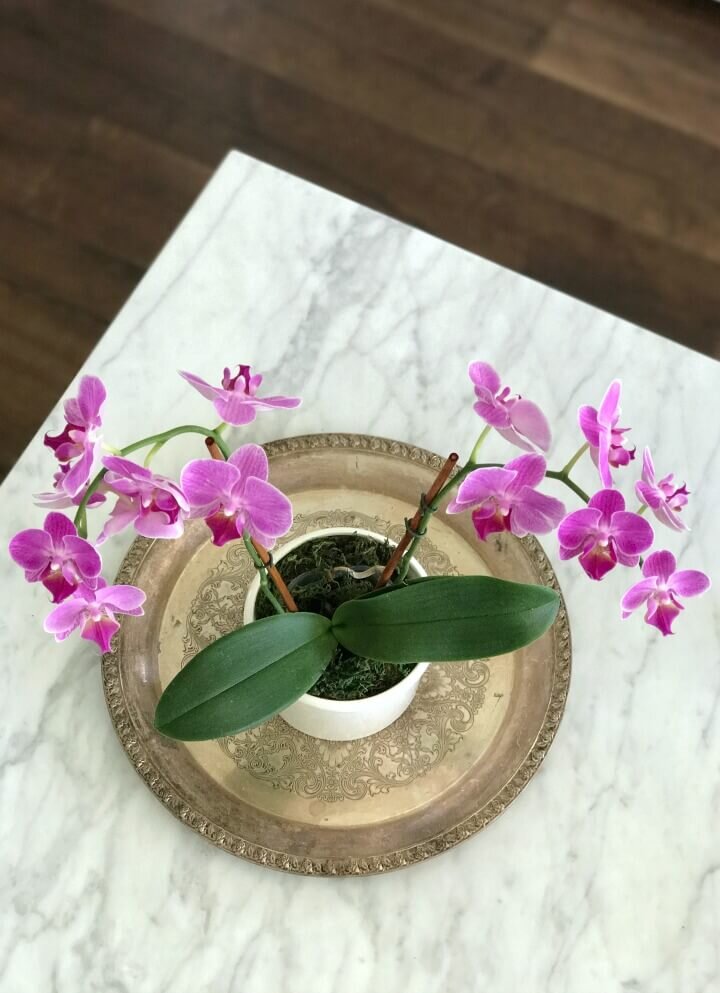
There are 4 types of orchids you will commonly encounter. These are:
Types of Orchids
Phalaenopsis Orchids (fayl-eh-nop-sis)
Phalaenopsis, also known as “moth orchids,” are the perfect orchid for any level gardener. Usually potted in a bark-moss combination, these orchids thrive with just a little care and water in most homes. Phalaenopsis' can be found in a wide range of colors and sizes.
Miltonia (mil-tone-ee-ah)
Orchids were considered exotic blooms only until a few years ago. The plants of greenhouses & wise gardeners armed with misters.
Today orchids can be thought of as a staple of a grocery store trip. Milk, bread, orchid...
A staple that will last much longer than the milk or bread. With proper care, the orchids can last for months & months.
Here are my tips for caring for your orchids...
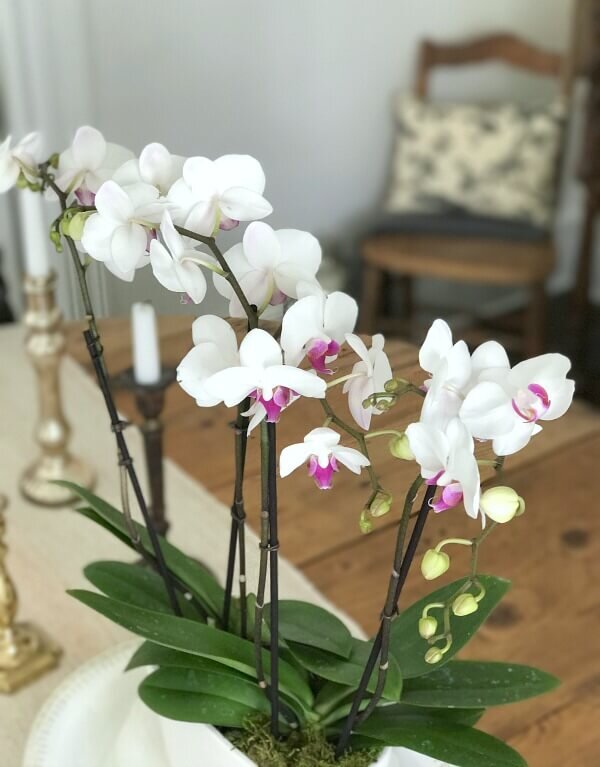
Tips for Caring for Orchids:
Watering -
As orchids are concerned to water less is best. Many have been lost to a literal outpouring of love!
To water your orchid properly, take it out of the decorative pot then place the plant in its plastic grower's pot in the sink under a slow-running tap for 10-15 seconds on each side of plant while avoiding crown and leaves. Water approximately every 10 days. Always check the potting medium before watering to make sure it is needed.
Once watered, drip dry before returning the plant to the decorative pot. Don't allow the orchid's potting medium to be constantly wet or plant to stand in water. Most orchids (but not all) like to almost dry out between waterings, but should never get bone dry.
If you live in a hot or dry climate, your orchid may need to be watered more a bit more often. You can often tell how moist the potting medium is by its weight. A heavy pot is a a well-watered plant that doesn't need to be watered again soon.
You can water your orchids with ice cubes. This is especially good for orchids planted in a container, not left in the plastic container & slipped into a decorative one.
Ice watering is slow so the orchid does not sit in the water. If you ice water you will have to add some cubes ( 1 - 3 depending on the size of the plant ) every 5 days or so.
Worth mentioning that cymbidium orchids like more water than the others. Water these lovelies about every 5 days.
Light -
Orchids like medium to bright indirect light. Try a sunny room out of the direct rays of light. A sunny window sill is not the best spot for an orchid.
Fluorescent light is acceptable to orchids. They will bloom in a windowless room or office with this type of light. Not the ideal light source, but good enough for first blooms.
Environment -
Most orchids prefer it indoors. Cymbidiums can tolerate being outdoors in moderate climates like that of Southern California.
Moderate room temperatures of about 65–75°F is perfect for orchids. This is the temperature found in most homes. Avoid extreme temperatures and drafts. Another reason to keep orchids off the window sills.
Like cut flowers, keep your orchids away from ripening fruit. They do not like the ethylene gas emitted by the fruit. Nor do they like smoke, so keep candles a safe distance for long lasting blooms.
Feeding -
There is no need to fertilize to enjoy the first flowers. If you keep the plant for the foliage or to attempt a second bloom, then fertilize monthly. Use a fertilizer specifically made for orchids or simply a balanced one. The label of a balanced fertilizer will read 20-20-20.
Roots -
What a about those roots? The exposed roots of the plant that you see are what help the plant absorb moisture and carbon dioxide from the air.
Also known as “air roots” these are normal and don’t indicate that you need to repot your plant. Do not to stuff them into the ceramic pot (let them come out the top) so they can “breathe.”
Unlike most other plants, orchids like to be root-bound. They can stay in their existing pot for about 2 years after you’ve purchased it. By then the potting medium does start to lose its nutrients and breaks down, so it’s time for repotting.
Flowers -
Orchid flowers are stunning and long lasting. If properly cared for the plant can bloom for months. Phalaenopsis bloom the longest, lasting 2- 3 months.
I am loving the 'pansy' flowers of the Miltonia that I just got. That is the one I have sitting in the sink for a proper watering.
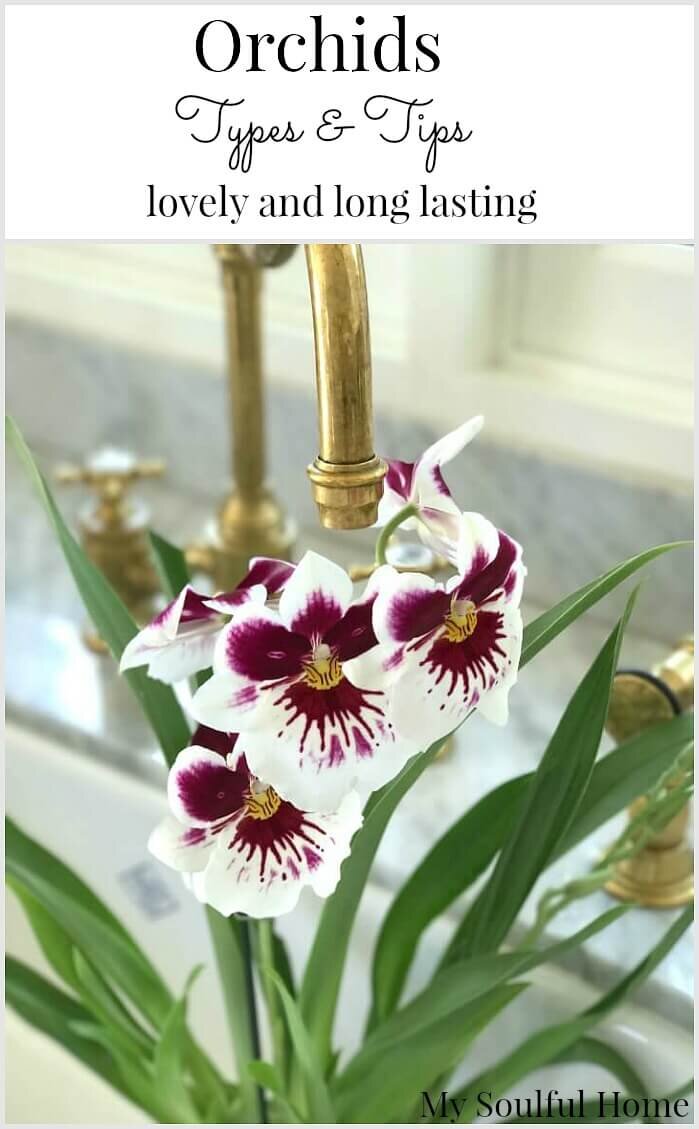
Other Ideas for using Orchids in your Home
If you want to create a really lovely potted container with orchids try underplanting with succulents.
As orchids require little water, they are a great companion to succulents. I suggested the ice cube method for watering this arrangement.
I created this arrangement last August & it lasted into December. To learn how visit my post HERE.
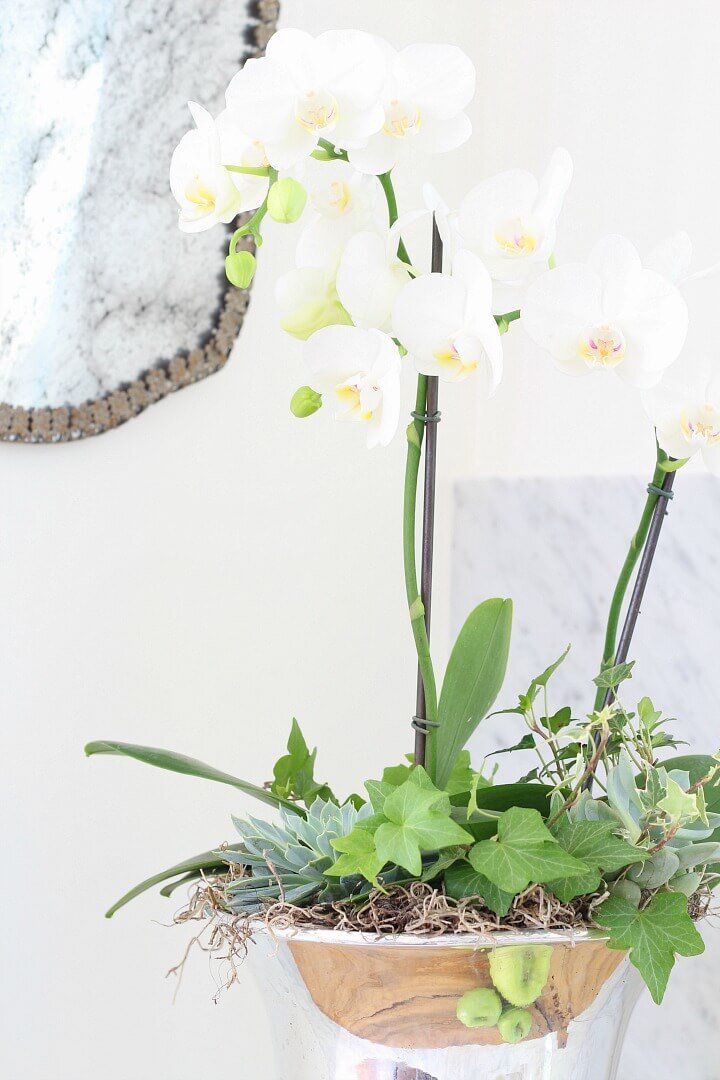
Orchids can also be used as cut flowers. I recently used orchids as cut flowers for the first time while creating the November arrangement for my book.
If you have had a chance to read the book, you'll know the story behind those beautiful orchids & how I ended up using them, although that was not my plan.
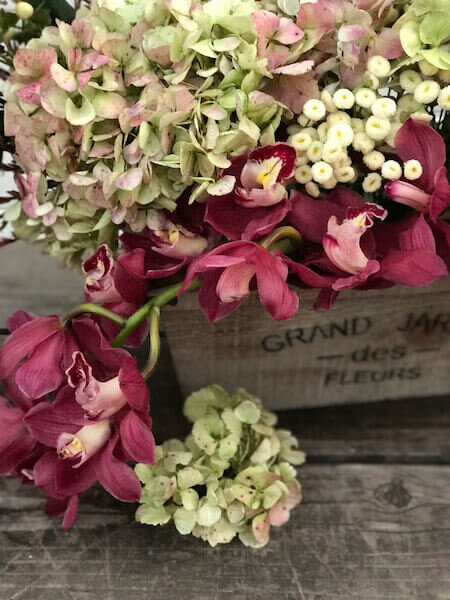
I think orchids look best draped in an arrangement & that is how I designed the November arrangement.
You simply cross the stems in the middle. If you want to learn more about this arrangement and the others in my book click HERE for a peek.
So head off to the grocery store & pick up an orchid. You are an expert now and will enjoy the blooms for months to come!
** Kelly **
psst...Today's podcast episode is all about Making Your Home More YOU! Listen to some sage advice & have some laughs! Click HERE.

